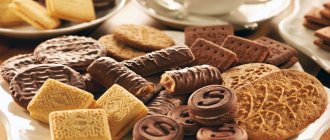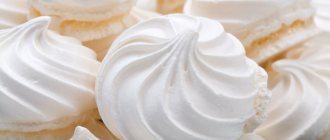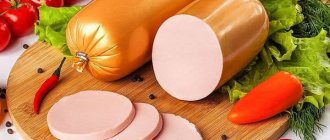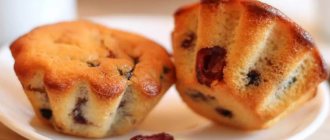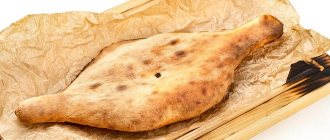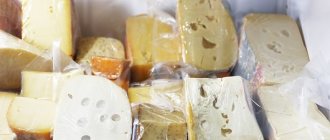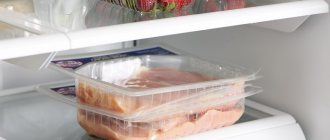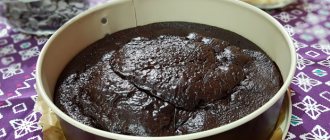How to replace parchment paper when baking?
The purpose of baking paper is to prevent the product from sticking to the baking sheet and prevent it from burning. It also protects against burning if the filling (juice) leaks. Based on this, you can find a replacement for baking paper from what you have on hand.
How to replace parchment paper when baking:
- Drawing tracing paper coated on both sides with vegetable oil;
- Regular office paper (clean), also oiled;
- Food-grade parchment (thick paper that supermarket baking bags are made from).
If you don’t have any of the above at home, you need to generously grease a baking sheet with oil or cooking oil and sprinkle with semolina or breadcrumbs. This will help prevent burning, and the baked goods will be easy to remove from the pan.
A special silicone mat will serve as an excellent replacement for baking paper. It is convenient to roll out and shape dough, as well as bake. It does not melt at high temperatures and does not react with foods, so it is completely safe. In addition, such a mat lasts a very long time, so you don’t have to constantly remember whether you still have baking paper or have already run out. There are convenient silicone molds for baking bread, muffins and pies.
Is it possible to replace baking paper with foil?
If you have food foil at home for baking, it can also be used instead of paper, but with some nuances:
- If you bake dough products, the foil should be greased with oil. There is no need for baking vegetables, fish, or meat;
- To prevent the dough from sticking to the foil, place it with the matte side on a baking sheet and the shiny side on top.
You also need to remember that the matte side can oxidize due to contact with the product and change its taste.
Foil can not only be placed as a sheet on a baking sheet, like paper. You can make any arbitrary shape from it, for example for a pie. The sides will prevent leaked juice from getting onto the baking sheet and burning. To create the molds, you need to take two or even three layers of foil, then it will fold easily and will not tear. To prevent the top of the pie from becoming too hard, you can cover it with a sheet of foil and remove the sheet about 10 minutes before it’s ready to allow the top to brown slightly.
Knowing what you can replace baking paper with, you won’t find yourself in a hopeless situation if it suddenly runs out, and baking will always be successful.
Who doesn't love to treat themselves to fresh baked goods for dinner? Light and airy meringue, soft puffs with raspberries, pies, sweet and salty - everything your heart desires. Every housewife has her own culinary secret. One uses parchment paper for baking and baking, the other uses oiled paper or foil. The taste of the prepared dishes depends on what you cover the baking sheet with. Of course, the most convenient way is parchment paper. But if you suddenly don’t have such paper at hand, you can find a replacement.
Is it possible and how to use foil instead of parchment paper?
Many housewives successfully use foil instead of parchment paper and the main advantage is that it is inexpensive and can be used not only as a coating, but also as a form. Please note that it is used differently than parchment paper.
Instructions:
- It is worth stretching and laying out not as a sheet, but to make sides. Because the foil does not prevent leakage and does not hold the liquid in one place.
- Therefore, if you are preparing pies with filling, the jam can easily leak out of the pies and flow onto the baking sheet.
- When you place the sheet of foil on the baking sheet, you need to form the edges. If you wish, you can make your own molds.
- To do this, several layers of foil are used and given the required shape.
Foil instead of parchment
What is baking parchment?
Parchment paper, or its other name, baking paper, is a unique material that has a lot of advantages. It is not subject to combustion, does not get wet or crumble, is greaseproof and resistant to high temperatures, and also retains the shape of baked goods and its aroma, preventing the entry of foreign odors. The parchment is impregnated with a solution of treated sulfuric acid (during the manufacturing process, after applying the solution, the parchment is immediately washed), and it is absolutely harmless for preparing confectionery and any other products on it, it can be used repeatedly, maybe once, depending on the quality of the parchment sheets.
Baking parchment is used to prevent baked goods from burning.
How to use baking paper
Place this paper on a baking sheet and cover a baking and baking dish with it. It serves as a layer between a baking sheet, frying pan or a special form and the dish that is being prepared on them. This way the product will not burn, stick, or cause damage to the dishes, which is also a clear plus. It must be remembered that the parchment should not touch the walls or oven door, it should only come into contact with the baking sheet itself, the mold and the dish. Parchment paper can also be used in the preparation of cold-process confectionery products, such as cheesecakes, in which case its main function is to preserve the shape of the product.
Foil
In emergency situations, when there is nothing else left, foil will do. This material is very fragile, so you need to be very careful when transferring the dough to it. Foil tends to heat up, so you need to constantly monitor the temperature in the oven so that the products do not burn.
Miss Clean magazine recommends using foil for baking foods that release a lot of juice. Usually fish and vegetables are wrapped in it. Foil retains the juice and aroma of food. It is rarely used for baking cakes, cookies and other sweets.
Parchment and baking paper - is there a difference?
There is a difference, but it is quite insignificant. Parchment is denser and is well suited for baking butter-based products, while paper will become soggy due to the fat released.
Parchment is intended both for baking products and for storing them. Usually very fatty or very moist products are stored in it, such as butter, spread, margarine or curd products. Confectionery and bakery products are baked in parchment. If the parchment is additionally covered with a silicone film on top, its water- and grease-repellent properties increase, then it is used for baking butter products from liquid dough.
Baking paper is usually suitable for baking and storing medium-fat products - in addition to confectionery, these include hard cheeses.
Baking paper is thinner than parchment
Important: Baking paper, parchment, is intended only for baking, and you should not bake meat, fish or vegetables in it. For such purposes, there is a baking sleeve that will not get wet, tear or spoil the appearance of the product.
Benefits of baking in a sleeve, foil or parchment
Firstly, under the action of the steam that forms inside, meat, fish or chicken are baked in their own juices and do not require the addition of fat, i.e. the dish turns out soft, juicy and more dietary.
Secondly, when baking in the oven in a sleeve or foil, the food retains useful microelements that are destroyed during frying.
Thirdly, the side dish, which can be placed in a sleeve or foil next to the main product, will be perfectly baked and will perfectly absorb the juice from the main dish.
Fourthly, the tightness of such baking allows you to safely add various sauces, marinades, and seasonings, improving and enhancing the taste of the dish. The taste of the meat can be improved by adding red wine or apple juice directly to the sleeve. The chicken can be coated with honey or sprinkled with orange juice. White wine, lemon juice or cream go well with fish.
Fifthly, baking in the oven frees up time and allows the housewife to do other things at this time.
Do they need to be lubricated with oil?
Parchment paper is not greased for baking high-fat products, but additional greasing will be required for cooking low-fat and low-fat products. Paper has less grease-repellent properties than parchment, and to avoid products sticking to it, it should be lubricated.
For baking low-fat products, grease parchment paper
How can you replace parchment paper for baking?
There are situations when you really want to bake something, but you don’t have parchment paper at hand. Let's look at what can replace it in the table.
Table: pros and cons of various options for replacing parchment paper.
| Replacement options | pros | Minuses | Is lubrication required? | What can you bake? | What can't you bake? |
| Drawing (or sewing) tracing paper |
|
| Required | Suitable for baked goods with a high fat content (for example, shortbread or yeast dough) and for cold baked goods (cheesecakes). |
|
| Absorbent paper |
|
| Not required | Moisture-absorbing paper is suitable for baking products with medium fat content - cottage cheese products, bread, kefir baked goods. Even without lubricating such paper, they do not stick. | You cannot bake very fatty products on such paper, such as cookies with sour cream or shortbread, butter cakes. |
| Regular office paper impregnated with oil |
| Required | Oiled office paper is suitable for baking unpretentious and simple products, such as Easter cottage cheese or cookies. | Not suitable for baking French macarons and strudels. | |
| Silicone Baking Mat |
| Not required | A silicone mat is a universal device; you can bake whatever you want on it; its surface will not damage the shape of the products or affect their structure. | ||
| Silicone coated paper |
| Not required | Silicone-coated paper easily releases from finished baked goods, so it can be reused many times, and is suitable for any type of dough (for a fancy sponge cake, use it only once, otherwise it will start to stick). | ||
| Baking bag |
|
| Not required | You can bake shortbread cookies in a baking bag | You cannot bake juicy pies and pies. |
| Foil |
| Required | You can bake cookies on shiny foil, but there is a high risk that they will burn. | Foil as a material is more suitable for baking juicy things, not for baking. | |
| Silicone baking molds |
| Not required | Any type of dough can also be baked in silicone molds; it is important to remember that they are only filled one-third full, because the dough greatly increases in volume during baking. | ||
| Paper baking dishes |
| Not required | Paper molds are suitable for baking muffins, cupcakes, Easter cakes and cupcakes. | Not suitable for baking with batters such as eclairs and profiteroles |
You don’t have to use an intermediate layer in the form of various papers, but simply coat the baking sheet with margarine, spread or butter. There is an option to stop there, or to cover the oil layer with semolina, flour or breadcrumbs on top. Be careful, the flour may burn.
An oiled baking sheet can be used for making pies, pies, and casseroles. You cannot bake delicate meringues or French macarons on such a baking sheet - they will definitely burn.
On an oiled baking sheet with sprinkles, cake layers are prepared and cookies are baked.
An oiled pan filled with semolina is used for baking casseroles and pies.
Also, one of the options for replacing the use of baking paper is baking on non-stick baking sheets, in which case they do not need to be greased with oil.
Non-stick baking tray does not need to be greased
Some housewives use a non-stick mixture and grease baking pans or baking sheets with it. Here's her recipe:
- Take half a glass of any kind of flour, vegetable oil and cooking (confectionery) fat. As fat you can use melted butter and even lard, everything except margarine. The fat should be cold.
- Mix all the “ingredients”, start beating with a mixer at low speed, at low speed.
- Gradually increase the beating speed, the mixture should turn white and increase in size.
- As soon as the non-stick mixture acquires a silvery tint, we turn off the mixer and can use it.
- The mixture is applied to the bottom and sides of baking sheets and baking dishes with a special silicone brush.
When the replacement will be unequal
Despite the variety of “substitutes,” it is important to remember those things that absolutely cannot be used for baking. This is for example:
- Newspapers - firstly, there is a high risk of fire, and secondly, when heated, they release toxic, poisonous substances contained in printing ink, which can become a source of poisoning.
- Written notebook sheets - ink also contains substances that become hazardous to health when heated.
- Unoiled office paper can easily catch fire.
- Vegetable oil does not protect the product from burning, it smokes, and because of this it spoils the taste of the dish and gives it a not particularly appetizing smell.
- Plastic bags melt at high temperatures and release toxic substances.
Good housewives know many interesting secrets, many of which we have now shared with you. Have fun cooking and remember that the lack of baking paper is not a reason not to please yourself or your family!
Who doesn't love to treat themselves to fresh baked goods for dinner? Light and airy meringue, soft puffs with raspberries, pies, sweet and salty - everything your heart desires. Every housewife has her own culinary secret. One uses parchment paper for baking and baking, the other uses oiled paper or foil. The taste of the prepared dishes depends on what you cover the baking sheet with. Of course, the most convenient way is parchment paper. But if you suddenly don’t have such paper at hand, you can find a replacement.
Available means
The ingenuity of our women and their practicality have long been noticed and appreciated. Here are a few improvised means that experienced housewives use instead of baking paper:
- sleeve for baking;
- cut parchment flour bag (white side facing baking);
- butter pack wrappers without foil;
- subparchment, which is used in the packaging of confectionery products;
- clean notebook sheets soaked in oil.
When using lined or patterned paper, you need to remember that they can be imprinted on the baked goods. If the packaging of butter or flour can be turned with the white side up, then the notebook sheets are completely lined, so they will leave marks on the baked goods with almost one hundred percent probability.
Such improvised means, unfortunately, do not always cope with their task. Often the dish still burns or becomes deformed. However, they can be used as an emergency option.
What is baking parchment?
Parchment paper, or its other name, baking paper, is a unique material that has a lot of advantages. It is not subject to combustion, does not get wet or crumble, is greaseproof and resistant to high temperatures, and also retains the shape of baked goods and its aroma, preventing the entry of foreign odors. The parchment is impregnated with a solution of treated sulfuric acid (during the manufacturing process, after applying the solution, the parchment is immediately washed), and it is absolutely harmless for preparing confectionery and any other products on it, it can be used repeatedly, maybe once, depending on the quality of the parchment sheets.
Baking parchment is used to prevent baked goods from burning.
How to use baking paper
Place this paper on a baking sheet and cover a baking and baking dish with it. It serves as a layer between a baking sheet, frying pan or a special form and the dish that is being prepared on them. This way the product will not burn, stick, or cause damage to the dishes, which is also a clear plus. It must be remembered that the parchment should not touch the walls or oven door, it should only come into contact with the baking sheet itself, the mold and the dish. Parchment paper can also be used in the preparation of cold-process confectionery products, such as cheesecakes, in which case its main function is to preserve the shape of the product.
I cover the bottom and sides of the pans and baking trays with baking parchment.
Baking bag
As a last resort, you can use a baking bag to bake the prepared confectionery product. Not everyone likes this alternative, because it is important to control the entire process from start to finish. At the same time, no one will guarantee the quality of the resulting baked goods. In some cases, it is better to abandon such a dubious alternative and still go to the store for parchment.
Baking parchment can be replaced with analogues. Most often, they are easy to find in every home. At the same time, it is important to ensure that the substitutes used do not deteriorate the taste of the prepared dish or harm health.
Parchment and baking paper - is there a difference?
There is a difference, but it is quite insignificant. Parchment is denser and is well suited for baking butter-based products, while paper will become soggy due to the fat released.
Parchment is intended both for baking products and for storing them. Usually very fatty or very moist products are stored in it, such as butter, spread, margarine or curd products. Confectionery and bakery products are baked in parchment. If the parchment is additionally covered with a silicone film on top, its water- and grease-repellent properties increase, then it is used for baking butter products from liquid dough.
Baking paper is usually suitable for baking and storing medium-fat products - in addition to confectionery, these include hard cheeses.
Baking paper is thinner than parchment
Important: Baking paper, parchment, is intended only for baking, and you should not bake meat, fish or vegetables in it. For such purposes, there is a baking sleeve that will not get wet, tear or spoil the appearance of the product.
Is it possible and how to use food-grade parchment instead of parchment paper?
Food-grade parchment is sold in stores where buns are sold.
Instructions:
- You need to cut the bag of buns into the required pieces of the desired size and coat with butter.
- Next, the products are laid out and baked.
- Food-grade parchment is often sold in the form of sheets, so you can safely use it while baking.
Subparchment
Do they need to be lubricated with oil?
Parchment paper is not greased for baking high-fat products, but additional greasing will be required for cooking low-fat and low-fat products. Paper has less grease-repellent properties than parchment, and to avoid products sticking to it, it should be lubricated.
For baking low-fat products, grease parchment paper
How can you replace parchment paper for baking?
There are situations when you really want to bake something, but you don’t have parchment paper at hand. Let's look at what can replace it in the table.
Table: pros and cons of various options for replacing parchment paper.
| Replacement options | pros | Minuses | Is lubrication required? | What can you bake? | What can't you bake? |
| Drawing (or sewing) tracing paper |
|
| Required | Suitable for baked goods with a high fat content (for example, shortbread or yeast dough) and for cold baked goods (cheesecakes). |
|
| Absorbent paper |
|
| Not required | Moisture-absorbing paper is suitable for baking products with medium fat content - cottage cheese products, bread, kefir baked goods. Even without lubricating such paper, they do not stick. | You cannot bake very fatty products on such paper, such as cookies with sour cream or shortbread, butter cakes. |
| Regular office paper impregnated with oil |
| Required | Oiled office paper is suitable for baking unpretentious and simple products, such as Easter cottage cheese or cookies. | Not suitable for baking French macarons and strudels. | |
| Silicone Baking Mat |
| Not required | A silicone mat is a universal device; you can bake whatever you want on it; its surface will not damage the shape of the products or affect their structure. | ||
| Silicone coated paper |
| Not required | Silicone-coated paper easily releases from finished baked goods, so it can be reused many times, and is suitable for any type of dough (for a fancy sponge cake, use it only once, otherwise it will start to stick). | ||
| Baking bag |
|
| Not required | You can bake shortbread cookies in a baking bag | You cannot bake juicy pies and pies. |
| Foil |
| Required | You can bake cookies on shiny foil, but there is a high risk that they will burn. | Foil as a material is more suitable for baking juicy things, not for baking. | |
| Silicone baking molds |
| Not required | Any type of dough can also be baked in silicone molds; it is important to remember that they are only filled one-third full, because the dough greatly increases in volume during baking. | ||
| Paper baking dishes |
| Not required | Paper molds are suitable for baking muffins, cupcakes, Easter cakes and cupcakes. | Not suitable for baking with batters such as eclairs and profiteroles |
Is it possible and how to use tracing paper instead of parchment paper?
Tracing paper is also often sold in regular stationery stores and comes in the form of paper in a roll. It can be translucent and somewhat waxy, pleasant, slippery to the touch.
Instructions:
- Before use, you need to cut a piece of the required size and generously grease it with oil.
- You can use a kitchen sponge for this. Apply the oil using normal blotting movements.
- Next, the prepared products are laid out on a baking sheet and baked.
Tracing paper for baking
When the replacement will be unequal
Despite the variety of “substitutes,” it is important to remember those things that absolutely cannot be used for baking. This is for example:
- Newspapers - firstly, there is a high risk of fire, and secondly, when heated, they release toxic, poisonous substances contained in printing ink, which can become a source of poisoning.
- Written notebook sheets - ink also contains substances that become hazardous to health when heated.
- Unoiled office paper can easily catch fire.
- Vegetable oil does not protect the product from burning, it smokes, and because of this it spoils the taste of the dish and gives it a not particularly appetizing smell.
- Plastic bags melt at high temperatures and release toxic substances.
Good housewives know many interesting secrets, many of which we have now shared with you. Have fun cooking and remember that the lack of baking paper is not a reason not to please yourself or your family!
Can I cook in aluminum foil?
Scientists from different countries have carried out numerous studies on the negative impact of increased amounts of aluminum on people who deal with this element every day in various industries.
. There are absolutely accurate data on the basis of which norms and rules were developed and implemented, mandatory for compliance by workers involved in the aluminum industry.
In addition, even after a superficial study of the materials presented in this article, a reasonable conclusion
– regularly cooking food in food foil can be harmful to your health!
In fact, there is not a single more or less serious study that would provide reinforced concrete evidence
In addition, aluminum foil increases the risk of developing a particular disease.
It is precisely because of the lack of such data that scientists and researchers around the world do not officially believe that cooking in aluminum foil
is hazardous to health. However, using common sense, some recommendations can be made:
— you should not use aluminum foil for cooking for elderly people, as their body has difficulty removing excess aluminum;
— you should not use aluminum foil for regular cooking for children;
- Do not use aluminum foil to cook food for sick people. For example, if such food is consumed by a person after a fracture
, an increased amount of aluminum in the body will interfere with the absorption of calcium, inhibiting the healing of bone tissue;
— you should not use aluminum foil for frequent (several times a week) cooking, even if this food will be consumed by a completely healthy adult.
However, occasional cooking with aluminum foil (once a week or less) is not likely to seriously affect our health.
